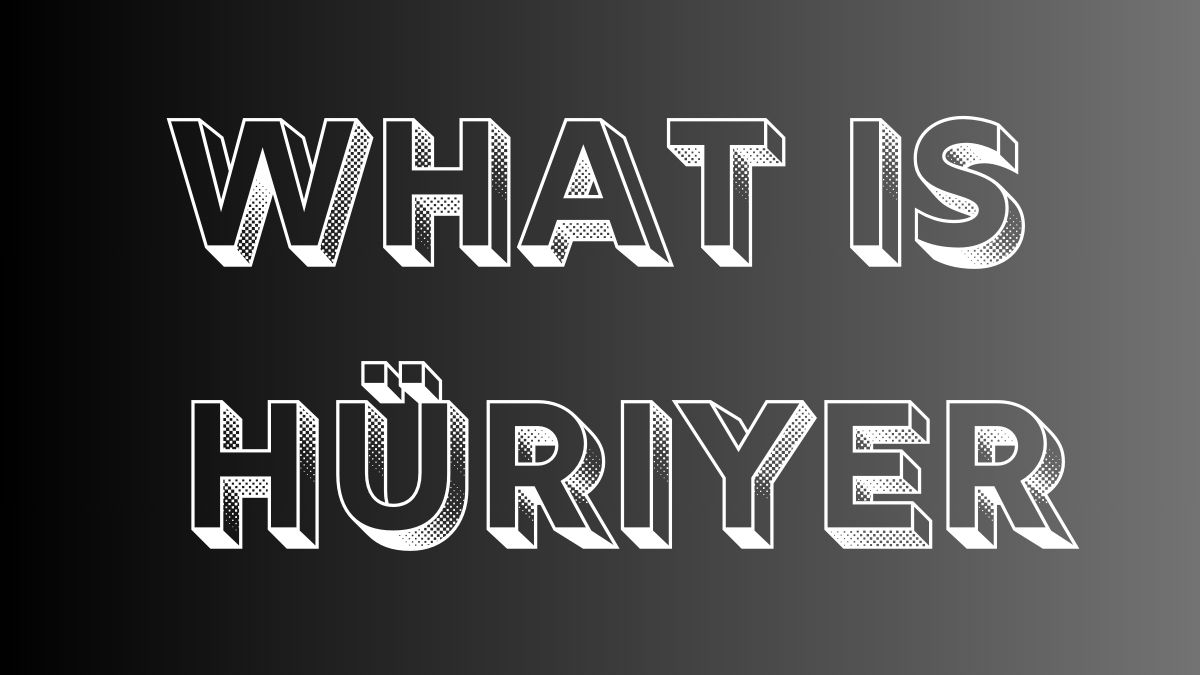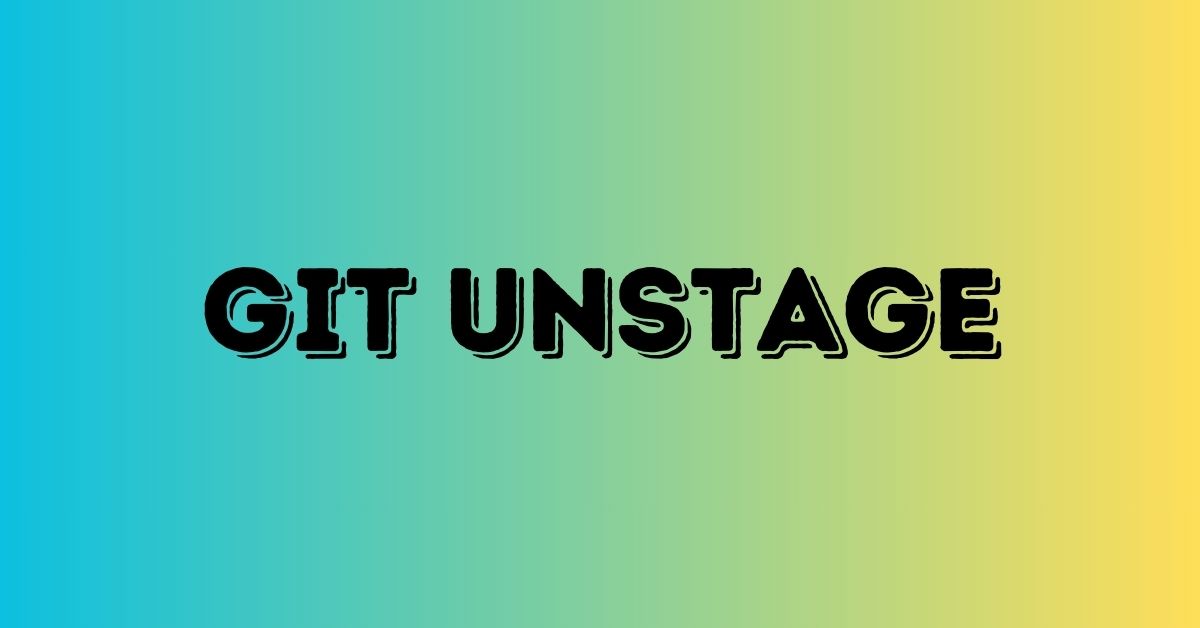Topic
Hüriyer: Unveiling the Essence of Human Freedom

The idea of “Hüriyer” has arisen as a symbol of human freedom and individuality in a world brimming with many cultures, languages, and faiths. This article investigates the history, cultural impact, and contemporary relevance of Hüriyer. Come with us as we explore the meaning of Hüriyer and its far-reaching effects on our lives.
The Roots of Hüriyer
- Ancient Beginnings
Hüriyer can be traced back to early human societies, when people first felt a need for freedom. Hüriyer is a concept that has developed over the course of many years, influenced by the ideas and actions of thinkers and revolutionary leaders.
Read more: Unlocking Opportunities with GovDeals – Liquidity Services Marketplace
- Philosophical Foundations
Hüriyer was supported by notable thinkers including John Locke and Jean-Jacques Rousseau. They contended that people have basic rights and liberties that the government must uphold.
Understanding Hüriyer in Modern Times
- Human Rights Movements
Human rights movements, motivated by Hüriyer’s ideas, flourished in the twentieth century. Nelson Mandela and Martin Luther King, Jr. are just two of the legendary figures who devoted their lives to the battle for human rights.
- Legal Framework
The Universal Declaration of Human Rights is a cornerstone of the legal papers and international accords where hüriyer has made its way. Each person deserves to have their basic liberties and rights protected by the law.
The Global Impact of Hüriyer
- Cultural Diversity
Hüriyer values cultural variety by affirming an individual’s right to freely express his or her own cultural background and practices. It promotes communities that welcome diversity and value individuality.
- Economic Empowerment
Hüriyer places a premium on individuals’ rights to pursue economic autonomy. It promotes equitable economic policies that lift people out of poverty by leveling the playing field.
The Intersection of Hüriyer and Technology
- Digital Age
Hüriyer acquires new depths at the crossroads of technology and the internet. While offering a place for people to voice their opinions, online forums can present risks to users’ personal information and safety.
- Cybersecurity Concerns
The importance of safeguarding people’s rights in the evolving digital environment cannot be overstated. Hüriyer advocates striking a compromise between safety precautions and the protection of civil liberties.
Conclusion
Hüriyer, an idea that has spread throughout the globe and between civilizations, is a symbol of the universal yearning for independence that has always existed in the human heart. This exploration of the heart of Hüri’yer shows how it has influenced our life from the time of ancient philosophies to the present day. Adopting Hüri’yer isn’t just something you can do if you want to; it’s a moral need to defend the foundations of individual liberty.
FAQs
What does Hüriyer mean?
Hüri’yer is a concept representing human freedom and individual rights.
How does Hüriyer relate to ancient civilizations?
Hüriyer has roots in the aspirations of individuals in ancient civilizations for personal autonomy and liberty.
Are there any famous advocates of Hüri’yer?
Yes, figures like John Locke, Jean-Jacques Rousseau, Nelson Mandela, and Martin Luther King Jr. have been advocates of Hüriyer.
What is the Universal Declaration of Human Rights?
It is an international document that outlines fundamental rights and freedoms for all individuals.
How does Hüri’yer intersect with technology?
In the digital age, Hüri’yer relates to issues of online freedom, privacy, and security.

Topic
filmywap
Filmywap – Filmywap bollywood movies download 720p 1080p 480p
Filmywap is the popular destination for all the Filmywap Movie Download
filmywap news – The Indian Express
Filmywap News Updates: Get Latest Breaking News, Photos and Video News on Filmywap. Also find Filmywap latest news headlines, picture gallery, top videos, …
Special: Filmywap – Times of India
Filmywap is a public torrent website which leakes pirated Hindi, English and Punjabi movies online. The website Filmywap uploads the pirated versions of …
Filmywap : Watch Movies & TV – Apps on Google Play
The developer says that this app doesn’t collect or share any user data. Learn more about data safety.
FilmyWap – Apps on Google Play
filmywap (@filmywapmovie) / X
Download free latest Hollywood movies and tv serial online only on filmywap, here you will get full top HD movies list of 2017.
Top 10 Sites for Filmywap Bollywood MP4/MKV Movies Download
Top 10 Sites for Filmywap Bollywood Movies Download · #1 WordFree4U.Trade · #2 A2movies.icu · #3 Okjatt.online · #4 3Movierulz.ms · #5 Skymovieshd.one · #6 …
Filmywap – Facebook
Filmywap, Kathmandu, Nepal. 578 likes · 16 talking about this. it is for film special short video.
Shaitaan (2024)FullMovie Filmywap Free Hindi Download 720p, 480p
Originally starring Lindsay Lohan, Rachel McAdams, Amanda Seyfried, and Lacey Chabert, the first take on Mean’Girls became an instant comedy classic. Shaitaan …
Filmywap (@filmywap.news) • Instagram photos and videos
6 Followers, 1 Following, 11 Posts – See Instagram photos and videos from Filmywap (@filmywap.news)
Filmywap . Website – Facebook
Filmywap . Website. @filmywap.website.2024. Welcome to my world ↪ Attitude Boy ↪ Photoholic ↪ Cricket Lover ↪ Mahakal ka fan ↪. . Went to …
filmywap.com.pe Website Traffic, Ranking, Analytics [February 2024]
filmywap.com.pe is ranked # in US with 0 Traffic. Categories: . Learn more about website traffic, market share, and more!
filmywap – – YouTube
Home. Shorts. Library. #filmywap. 532 videos • 215 channels. All. Shorts. SHORTS · #filmywap #movie #movieshub #love …
filmywap (@wapfilmy1) / X
Return Jatti Happy Gosal Mp3 Song Download Filmywap | @scoopit https://t.co/3p4RFsx95Q.
Filmywap (@filmywap.news) • Instagram photos and videos
6 Followers, 1 Following, 11 Posts – See Instagram photos and videos from Filmywap (@filmywap.news)
Filmywap – TikTok
Topic
Understanding Caste: A Comprehensive Guide

Casteò has been a fundamental aspect of social organization in various cultures throughout history. From ancient civilizations to modern societies, caste systems have shaped the dynamics of communities and influenced individuals’ lives. This comprehensive guide delves into the intricacies of caste, exploring its origins, impact, and contemporary significance.
Caste refers to a social stratification system where individuals are grouped into distinct categories based on birth, occupation, and social status. It has been prevalent in societies across the globe, although its manifestations and complexities vary widely. The concept of caste has deep historical roots and holds significant importance in understanding the social fabric of different cultures.
Origins of Casteò
The origins of caste can be traced back to ancient civilizations such as Mesopotamia, Egypt, and the Indus Valley. These societies developed hierarchical structures based on professions and social roles, laying the foundation for caste systems to emerge. Over time, caste evolved into a complex system of social stratification, particularly prominent in Hinduism and its Varna and Jati systems.
Types of Caste Systems
In Hinduism, the Varna system categorizes individuals into four main groups: Brahmins (priests and scholars), Kshatriyas (warriors and rulers), Vaishyas (merchants and landowners), and Shudras (laborers and service providers). Alongside the Varna system exists the Jati system, which comprises numerous sub-castes or communities based on professions and hereditary occupations. Similar caste-like systems exist in other cultures, each with its own unique characteristics.
Social Hierarchy and Caste
Caste systems are characterized by rigid social hierarchies, where individuals’ status and opportunities are determined by their caste affiliation. These systems often perpetuate inequalities and disparities, with certain castes enjoying privileges while others face discrimination and marginalization. The hierarchical structure of caste influences various aspects of social interactions, including marriage, education, and employment.
Caste Discrimination
Throughout history, caste discrimination has been a pervasive issue, manifesting in various forms of social, economic, and political exclusion. Historical examples include the segregation of Dalits (formerly known as “untouchables”) in India and the marginalization of certain castes in other societies. Despite legal reforms and social movements aimed at addressing caste discrimination, challenges persist, particularly in rural areas and marginalized communities.
Caste in Contemporary Society
In modern times, caste continues to play a significant role in shaping social relations and identities, particularly in South Asia. Legal interventions have sought to address caste-based discrimination and promote equality, yet deeply entrenched social attitudes and practices pose obstacles to meaningful change. The cultural perceptions and attitudes towards caste vary, with some advocating for its preservation as a cultural heritage, while others call for its abolition.
Intersectionality of Caste
Caste intersects with other dimensions of identity, such as gender, race, and socioeconomic status, creating complex layers of privilege and oppression. Women from marginalized castes, for example, face multiple forms of discrimination based on both gender and caste. Similarly, caste-based disparities in education, employment, and healthcare exacerbate socioeconomic inequalities within communities.
Debates and Controversies Surrounding Caste
Academic discourse and political debates surrounding caste often center on questions of social justice, identity politics, and affirmative action. Scholars and policymakers grapple with issues such as caste-based reservations in education and employment, the effectiveness of anti-discrimination laws, and the role of caste in electoral politics. Debates over caste reveal deep-seated divisions within societies and raise questions about the nature of equality and social justice.
Caste and Identity
Caste plays a crucial role in shaping both personal and collective identities, influencing individuals’ sense of belonging and social identity. However, caste-based identity can also be a source of stigma and marginalization, particularly for those from lower castes. Challenges to caste-based identity arise from efforts to promote inclusivity and diversity, challenging traditional notions of purity and hierarchy.
Global Perspectives on Caste
While caste is most commonly associated with South Asian societies, similar forms of social stratification exist in other parts of the world. Comparisons with other systems of social hierarchy, such as race and class, highlight the universality of caste-like structures and the need for global solidarity in addressing caste-based discrimination. International efforts towards caste equality have gained momentum, with organizations advocating for human rights and social justice.
Education and Awareness about Caste
Education and awareness are essential tools in combating caste discrimination and promoting social inclusion. Initiatives aimed at raising awareness about caste-based discrimination and promoting inter-caste dialogue play a crucial role in challenging stereotypes and fostering empathy and understanding. Education empowers individuals to recognize and challenge caste-based inequalities, paving the way for a more equitable and inclusive society.
Future Outlook
The future of caste remains uncertain, with ongoing debates and struggles for social justice shaping its trajectory. While progress has been made in addressing caste-based discrimination, significant challenges remain, requiring sustained efforts from governments, civil society, and communities. The emergence of new social movements and advocacy efforts offers hope for meaningful change, yet the entrenched nature of caste-based inequalities poses formidable obstacles.
Conclusion
understanding casteò is essential for grappling with the complexities of social inequality and injustice. From its ancient origins to its contemporary manifestations, caste has profoundly influenced the lives of millions, shaping identities, opportunities, and social relations. By addressing caste-based discrimination and promoting inclusivity and equality, societies can move towards a more just and equitable future.
FAQs
What is the origin of the caste system?
The caste system has ancient roots, evolving from early forms of social organization in ancient civilizations.
How does caste intersect with other dimensions of identity?
Caste intersects with factors such as gender, race, and socioeconomic status, creating complex layers of privilege and oppression.
What are some examples of casteò discrimination in contemporary society?
Examples include the marginalization of Dalits in India and disparities in education and employment based on caste.
What efforts are being made to address caste-based discrimination?
Legal reforms, social movements, and education initiatives are among the efforts aimed at combating caste discrimination and promoting equality.
What is the future outlook for casteò?
The future of caste remains uncertain, with ongoing debates and struggles for social justice shaping its trajectory.
Topic
Mastering Git Unstage: A Comprehensive Guide to Refining Commits and Managing Changes Efficiently

When it comes to version control systems, Git is unrivaled when it comes to handling project history. Git relies on its staging area, or index, which is an essential component. Before submitting changes to the repository, this staging area is used to arrange the modifications to files. What if, however, you realize after staging certain changes that not all of them should be committed? The idea of “git unstage” is relevant here.
Understanding Git Staging Area
Before delving into “git unstage,” it’s crucial to grasp the concept of the Git staging area. When you make modifications to files in your working directory, Git allows you to stage these changes selectively before committing them. This enables you to craft logical commits, grouping related changes together for clarity and organization.
What Does “Git Unstage” Mean?
“Git unstage” refers to the process of removing changes from the staging area, effectively reversing the action of staging. This operation allows you to reconsider which modifications should be included in the next commit and which ones should be omitted.
Using “git reset HEAD <file>”
One method to unstage changes in Git is by utilizing the “git reset” command followed by the file name. This command effectively resets the staging area for the specified file, leaving the changes unstaged.
Using “git reset HEAD — <file>”
Similar to the previous method, this command resets the staging area for the specified file. However, the double hyphen (–) serves to distinguish the file name from potential branch names, ensuring clarity in command interpretation.
Using “git restore –staged <file>”
Alternatively, you can employ the “git restore” command with the “–staged” option, followed by the file name. This command restores the specified file to its state in the last commit while keeping the modifications in the working directory.
Difference Between “Git Reset” and “Git Restore”
While both “git reset” and “git restore” can be used to unstage changes, they operate differently. “Git reset” modifies the staging area directly, whereas “git restore” manipulates the working directory and staging area separately. Understanding this disparity is crucial for choosing the appropriate command based on your workflow requirements.
Best Practices for Using “Git Unstage”
When employing “git unstage,” it’s essential to follow best practices to maintain a clean and organized repository:
- Review changes thoroughly before staging to minimize the need for unstaging.
- Utilize selective staging to commit logically grouped changes.
- Double-check unstaged files to ensure no unintended modifications are left in the staging area.
Avoiding Unnecessary Unstaging
While “git unstage” provides a convenient means to refine commits, it’s preferable to avoid unnecessary unstaging whenever possible. By adopting disciplined staging practices and committing atomic changes, you can streamline your workflow and minimize the need for extensive unstaging maneuvers.
Common Mistakes to Avoid
In the process of using “git unstage,” beware of common pitfalls that could lead to unintended consequences:
- Unstaging changes without proper review, potentially overlooking critical modifications.
- Unstaging files indiscriminately, resulting in incomplete or inconsistent commits.
- Neglecting to verify unstaged changes before proceeding with the next commit, risking unintended inclusions.
Impact of Unstaging on Git History
Unstaging changes in Git does not directly alter the repository’s history. However, it influences subsequent commits by determining which modifications are included or excluded from each commit snapshot. Understanding the implications of unstaging is essential for maintaining a coherent project history and facilitating collaborative development efforts.
Undoing Git Unstage
If you accidentally unstage changes or realize that unstaging was unnecessary, fear not—Git provides mechanisms for undoing actions. By carefully orchestrating commits, utilizing Git reflogs, or leveraging version control best practices, you can rectify unstaging errors and restore integrity to your repository.
Conclusion
In the dynamic landscape of software development, mastering Git and its nuances is indispensable for efficient collaboration and version control management. Understanding how to effectively utilize commands like “git unstage” empowers developers to refine commits, maintain a clean project history, and mitigate potential errors. By adhering to best practices, avoiding common pitfalls, and embracing the iterative nature of version control, teams can optimize their workflow and accelerate the delivery of high-quality software products.
FAQs
Can I unstage multiple files simultaneously in Git?
Yes, you can unstage multiple files at once by specifying their names in the “git reset” or “git restore” commands, separated by spaces.
Will unstaging changes affect other collaborators working on the same repository?
No, unstaging changes in your local repository does not impact other collaborators until you push those changes to a shared remote repository.
Is there a way to preview unstaged changes before committing them?
Yes, you can use the “git diff” command to view unstaged changes in your working directory before deciding whether to stage or discard them.
Can I undo an unstaging operation after it’s been executed?
Yes, Git provides various methods for undoing actions, including unstaging changes. You can revert to a previous commit, utilize Git reflogs to recover lost commits, or employ other version control strategies to rectify errors.
Are there graphical tools available for managing Git staging and unstaging?
Yes, several graphical user interfaces (GUIs) for Git, such as GitKraken, SourceTree, and GitHub Desktop, offer intuitive interfaces for staging, unstaging, and managing changes visually.
-

 Entertainment8 months ago
Entertainment8 months agoUnveiling the World of HDToday
-

 Technology8 months ago
Technology8 months agoUnveiling the Wonders of Teltlk Technology
-

 Business8 months ago
Business8 months agoUnlocking Opportunities with GovDeals – Liquidity Services Marketplace
-

 Technology8 months ago
Technology8 months agoÇebiti: Corporate Operations with an Integrated AI Platform
-

 Business8 months ago
Business8 months agoThe Ultimate Guide to High Risk Merchant Services
-

 Health8 months ago
Health8 months agoIlluminate Your Scans: Unveiling the Magic of Luminous Scans in Modern Imaging
-

 Health7 months ago
Health7 months agoExploring the Benefits of wellhealthorganic Home Remedies
-

 Sports8 months ago
Sports8 months agofutbol libre: Embracing the Joy of Unconventional Football









